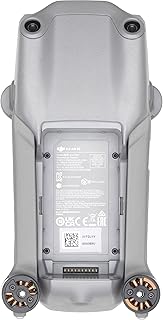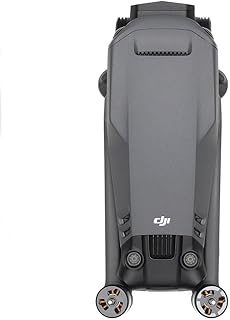RotorLogic Drone: A Tool for Environmental Monitoring and Research
Introduction:
The RotorLogic Drone is a versatile aerial platform designed for environmental monitoring and research. Combining advanced technology and user-friendly features, this drone offers a unique solution for scientists, researchers, and environmental agencies.
Key Features:
* High-Resolution Imaging: The drone is equipped with high-resolution cameras capable of capturing detailed images and videos of landscapes, ecosystems, and infrastructure. This data can be used for vegetation mapping, biodiversity monitoring, habitat assessment, and damage assessment.
* Multi-Spectral Imaging: The RotorLogic Drone can be outfitted with multi-spectral sensors that capture images across different wavelengths of light. This technology enables the identification of plant health, stress levels, and other environmental indicators. It plays a crucial role in agricultural monitoring, forestry management, and pollution detection.
* Thermal Imaging: The drone features a thermal camera that detects temperature variations. This capability allows for monitoring heat stress in plants, detecting wildfires, locating underground utilities, and identifying leaks in pipelines.
* LiDAR Technology: Optional LiDAR sensors provide accurate 3D models of the environment. This data can be used for precise elevation mapping, volumetric calculations, and creating detailed representations of complex landscapes.
* Long Flight Endurance: With extended battery life, the RotorLogic Drone can cover vast areas and conduct long-term monitoring projects. This feature is particularly useful for surveying remote areas, studying wildlife migration patterns, and conducting aerial surveillance.
* Autonomous Flight: The drone's autonomous flight capabilities allow for pre-programmed missions and data collection, minimizing human intervention and ensuring efficient data gathering.
* Data Analysis and Reporting: The RotorLogic Drone platform provides user-friendly software for data analysis, visualization, and reporting. It allows researchers to extract valuable insights from collected images and data, facilitating scientific research and informed decision-making.
Applications:
* Environmental Monitoring: The RotorLogic Drone can be utilized for monitoring air quality, water quality, and land use changes. It plays a critical role in detecting pollution, identifying deforestation, and assessing the impact of natural disasters.
* Wildlife Research: The drone provides a safe and efficient method for studying wildlife populations, migration patterns, and habitat use. It can be used to monitor endangered species, track animal movement, and observe behavior.
* Agriculture: The drone's multi-spectral imaging capabilities enable precision agriculture practices, including crop health monitoring, fertilizer optimization, and pest detection. It helps farmers maximize yields and reduce environmental impact.
* Forestry Management: The RotorLogic Drone facilitates efficient forest inventory, fire risk assessment, and disease detection. It helps manage forest resources sustainably and ensure the health of our ecosystems.
* Infrastructure Inspection: The drone can be used for inspecting bridges, pipelines, power lines, and other critical infrastructure. It provides a safe and cost-effective alternative to traditional inspection methods, identifying potential hazards and facilitating timely repairs.
Conclusion:
The RotorLogic Drone represents a cutting-edge tool for environmental monitoring and research. By combining advanced technology and user-friendly features, it empowers scientists, researchers, and environmental agencies to gather crucial data and make informed decisions for a sustainable future. Its versatility, efficiency, and cost-effectiveness make it an indispensable asset in addressing environmental challenges and promoting scientific advancement.


